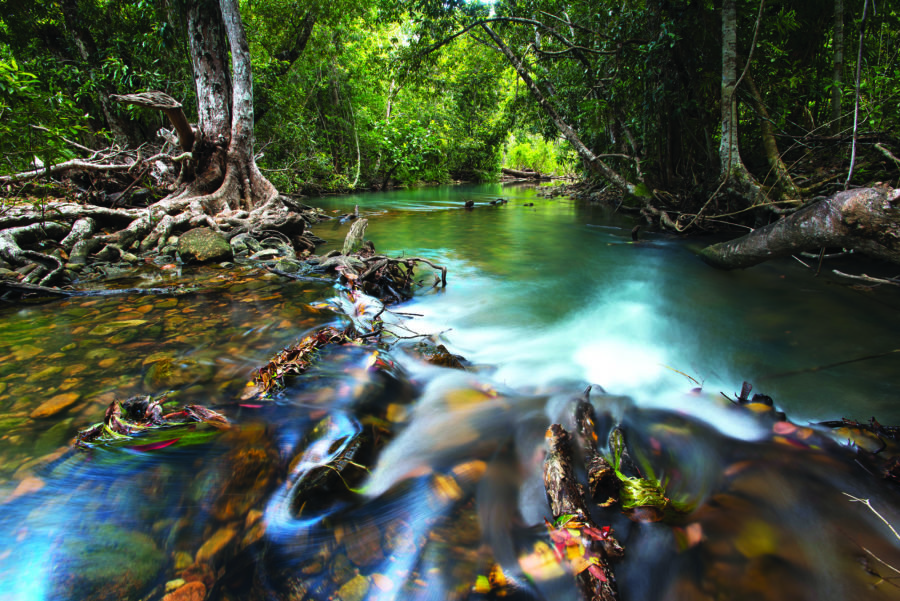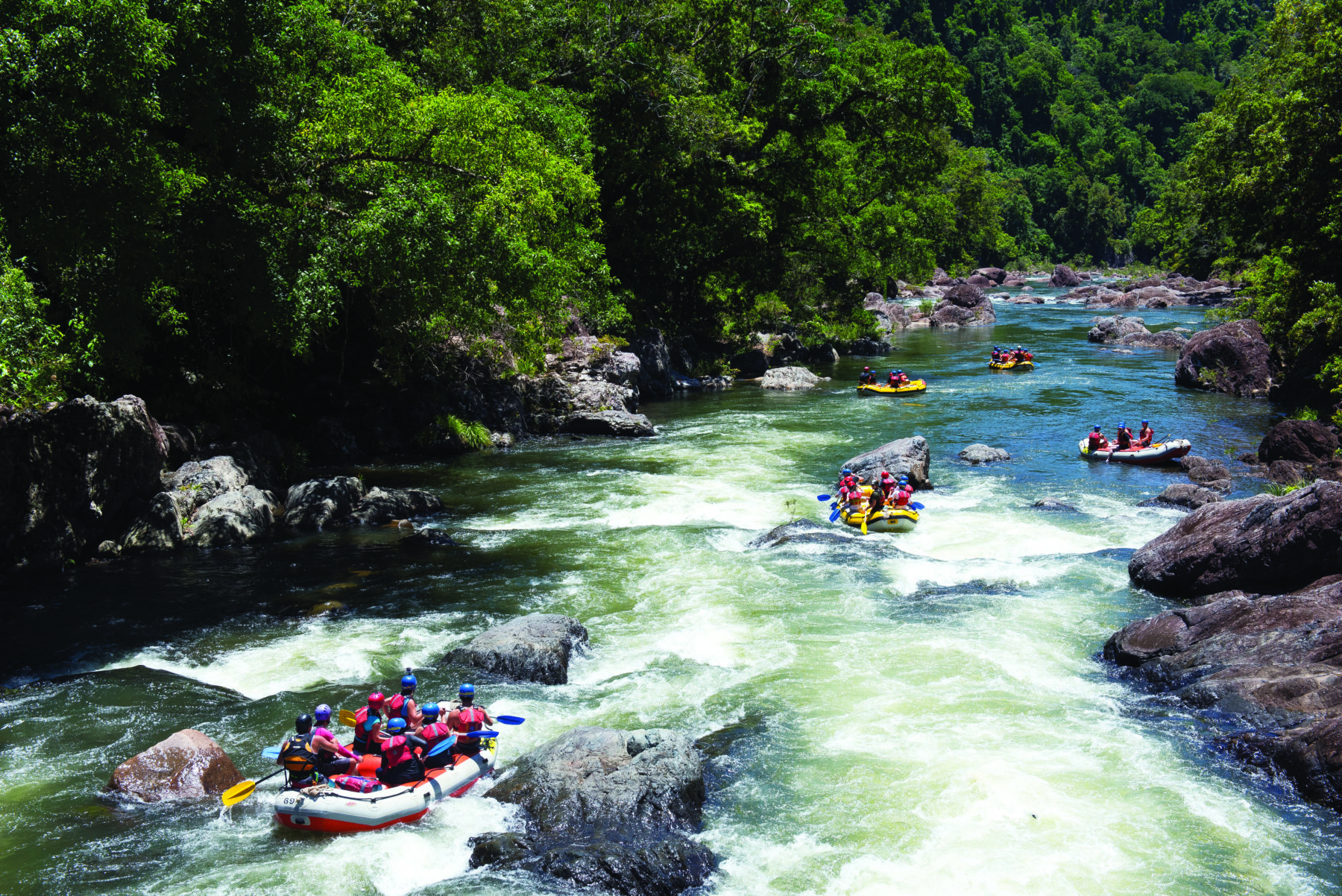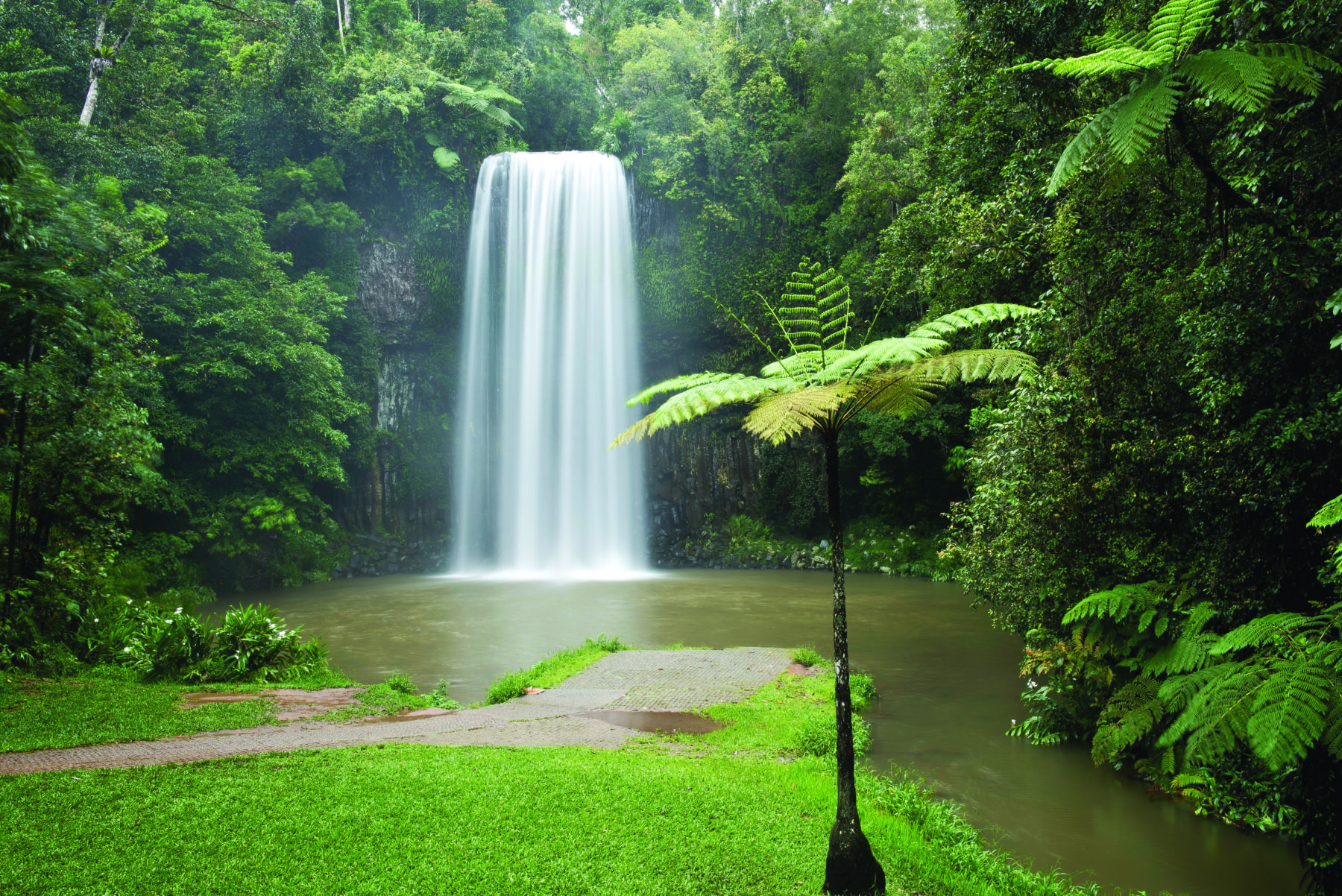Travel the Wet Tropics World Heritage Area

“You will get wet,” he says. The whitewater rafting guide then breaks into a smile. “You will have fun…and you will get wet.”
It’s only 9am and already the mercury is pushing 35°C. We’re in Tully Gorge National Park, about 95km south-west of Cairns in Tropical North Queensland. Our only cool relief will be from the river. It’s February, the rejuvenating summer rains are in full swing and the river is running high and fast. Our raft – one of seven – will be commanded by Dave Macfarlane. The Raging Thunder Adventures guide knows just how powerful the water is, because the Kareeya Hydro Power Station above us is at maximum output, hitting an impressive 88 megawatts. He adjusts our route accordingly.
It’s not just the churning Tully River that has benefited from the deluge. Across the region, all the waterfalls are roaring, the lookouts are lush, and as a cooling afternoon storm rolls in, the sky turns from clear blue to a brooding charcoal grey.
In the rainforest everything seems alive. Day and night, every bird, bug and frog sings happily among the dripping leaves. The Wet Tropics are nothing if not loud. But today, the attention of our helmeted and life-jacketed group of 40 is focused on the boulder-filled Tully River that cuts through the 54,300ha national park.
Today, our trip is only 12km, but it’s a wild ride and follows a strict hierarchy. The river, which changes character daily, tells the guide what to do, and he directs us: paddle forwards, paddle backwards, paddle hard, stop, hold on and – in the big rapids – get down. Sometimes all these instructions are fired in rapid succession. But you’re never doing one for more than five or so seconds, and the rest is gentle drifting – both in and out of the raft, which we sometimes exit involuntarily.

THIS AREA IS called the Cassowary Coast, but so far the 1.8m-tall birds have eluded us. We’ve been told our best chance to see one is on the easy 1.3km Fan Palm Walk in Djiru National Park, 5km south of Mission Beach. Insects and tropical birds create a racket around us, but the rustling in the dense forest is not caused by foraging cassowaries. Rather, it’s the wind flapping the fan palms, which thrive in soggy soil due to their broad shape allowing for maximum sunlight absorption.
We spot none of the elusive birds on our walk, but next morning a pair saunters past our motel in Tully. Since we’ve been here, there’s been no rain, although it’s never far away. Tully holds Australia’s record for the highest annual rainfall in a populated area. While the locals have learnt to work around the rain, it has become an export attraction. A Mamu Tropical Skywalk customer service officer says the most positive comments are from the British: “They love the tropics because it’s wet, but not cold.”
The vista that Mamu unveils from its 350m-long walkway jutting into the North Johnstone River Valley is truly spectacular. Via the skywalk, or the alternative forest path, you arrive at a 100-step tower. After a breathless climb, you can gaze north up the valley to layer upon layer of ridges and peaks that fade off into the heat haze.
This treetop attraction, which is located about 30 minutes drive inland from Innisfail, was born out of an infamous disaster. In March 2006 Cyclone Larry shredded so much of the rainforest around here that the skywalk was able to be built with relative ease, with only minimal manual clearing.
Advantage was taken of a natural cycle: much like a eucalypt forest needs fire, destructive winds break up the rainforest canopy, allowing sunlight in to ignite the next generation of growth.
The waterfalls here are also thriving from the seasonal rain – 18m Millaa Millaa Falls is easily the prettiest. But near Mamu is a 3.5km track to the less frequently visited Nandroya Falls, which is narrower, higher and still more impressive as Douglas Creek drops 50m from a narrow chute.

THE FINAL BLAZE of the setting sun is a cue for frogs and other wildlife to begin stirring to feed. Alan Gillanders, a former teacher who’s run wildlife tours on the Atherton Tableland for 14 years, has developed a sense for where such creatures might be lurking, which is handy because it’s pitch black as we walk along the track to Dinner Falls in Mt Hypipamee National Park, south of Atherton. Suddenly, he stops and swings his light up to a branch where a prehensile-tailed rat sits. At ground level he susses out two northern barred frogs, then again his beam hits the branches above – almost instinctively – and we spot the white stomach of another frog perched above. We turn off all our lights to admire luminescent fungi and fireflies. Then Alan scans the forest with a thermal imaging device and detects something. “It’s big,” he says, and his spotlight picks up a red-legged pademelon in a gully.
The next day, Alan takes us to a place favoured by creatures that are a little shyer. Along Peterson Creek in Yungaburra there’s a spot where platypuses venture at dawn or dusk. But because it’s mid-morning our attention is turned skyward, where two green ringtail possums embrace, probably a mother and her young.
Visit Tropical North Queensland for more.

